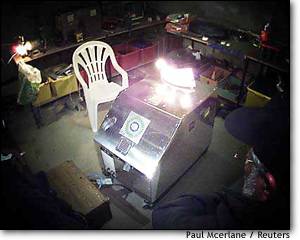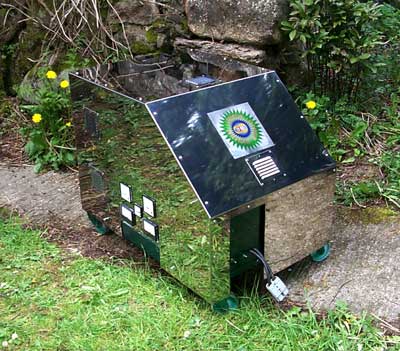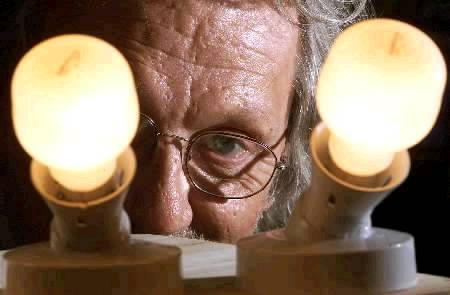Taken from MSNBC on 01/24/02 http://www.msnbc.com/news/692199.asp?0dm=C21AN&cp1=1#BODY
Here is Jasker's Web Site : http://www.jasker.com

|
‘Free energy’ or ‘voodoo science’? |
||
| Irish
inventor says he’s built a revolutionary power source; skeptics abound A
prototype of the Jasker Power System is lit up by bulbs
connected to the device at a secret Irish location. The system
is hooked up to 12-volt batteries, but the inventor contends
that the batteries' electrical power is replenished by the
system. |
|
|
|
|
A technician peers between a pair of household light bulbs which were being powered by the prototype of the Jasker Power System, a device whose makers say it can provide free energy, January 11, 2002. Its inventor, a 58 year-old electrical engineer who intends to remain anonymous, has spent 23 years perfecting the machine says it is capable of nothing less than replenishing its own energy source. Experts contacted by Reuters were wary, citing the first law of thermodynamics which states you can't get more energy out than you put in. REUTERS/Paul McErlane |
|
| DUBLIN,
Ireland, Jan. 22 — It
has been a pipe dream of inventors since Leonardo da Vinci, but
has the secret of free energy now been found in Ireland?
A
COLD stone house on a windswept Irish hillside may seem an
unlikely setting for the birthplace of such an epoch-making
discovery, but it is here that an Irish inventor says he has
developed a machine that could change the world.
Experts contacted by Reuters about the Jasker device
were wary, citing the first law of thermodynamics — which, in
layman’s terms, states that you can’t get more energy out
than you put in. UNDAUNTED BY CRITICS Undaunted, the inventor says that once powered up, his divice can run indefinitely - or at least until the parts wear out, adding that he has supplied all his own domestic power needs free for 17 months. But he is keen to head off the notion that he has tapped into the age-old myth of perpetual motion. “Perpetual motion is impossible. This is a self-sustaining unit which at the same time provides surplus electrical energy,” he said. In a demonstration for Reuters, a prototype — roughly the size of a dishwasher — was run for around 10 minutes using four 12-volt car batteries as an initial power source. Emitting a steady motorized hum, the machine kept three 100-watt light bulbs lit for the duration.
A multimeter reading of the batteries’ voltage before
the device started up showed a total of 48.9 volts. When it was
switched off, a second reading showed 51.2 volts, indicating
that the voltage had not run down. FRINGE
THEORIES Nick Cook, aerospace consultant to Jane’s Defense
Weekly and author of “The Hunt for Zero Point,” is not as
quick as some to dismiss the possibilities.
|


